If you click on a link and make a purchase we may receive a small commission. Read our editorial policy.
Molly Mendoza discusses their latest book STRAY and toxic nostalgia
I hope the audience gets from Stray it's “Hey, you messed up but someone still loves you, baby.”
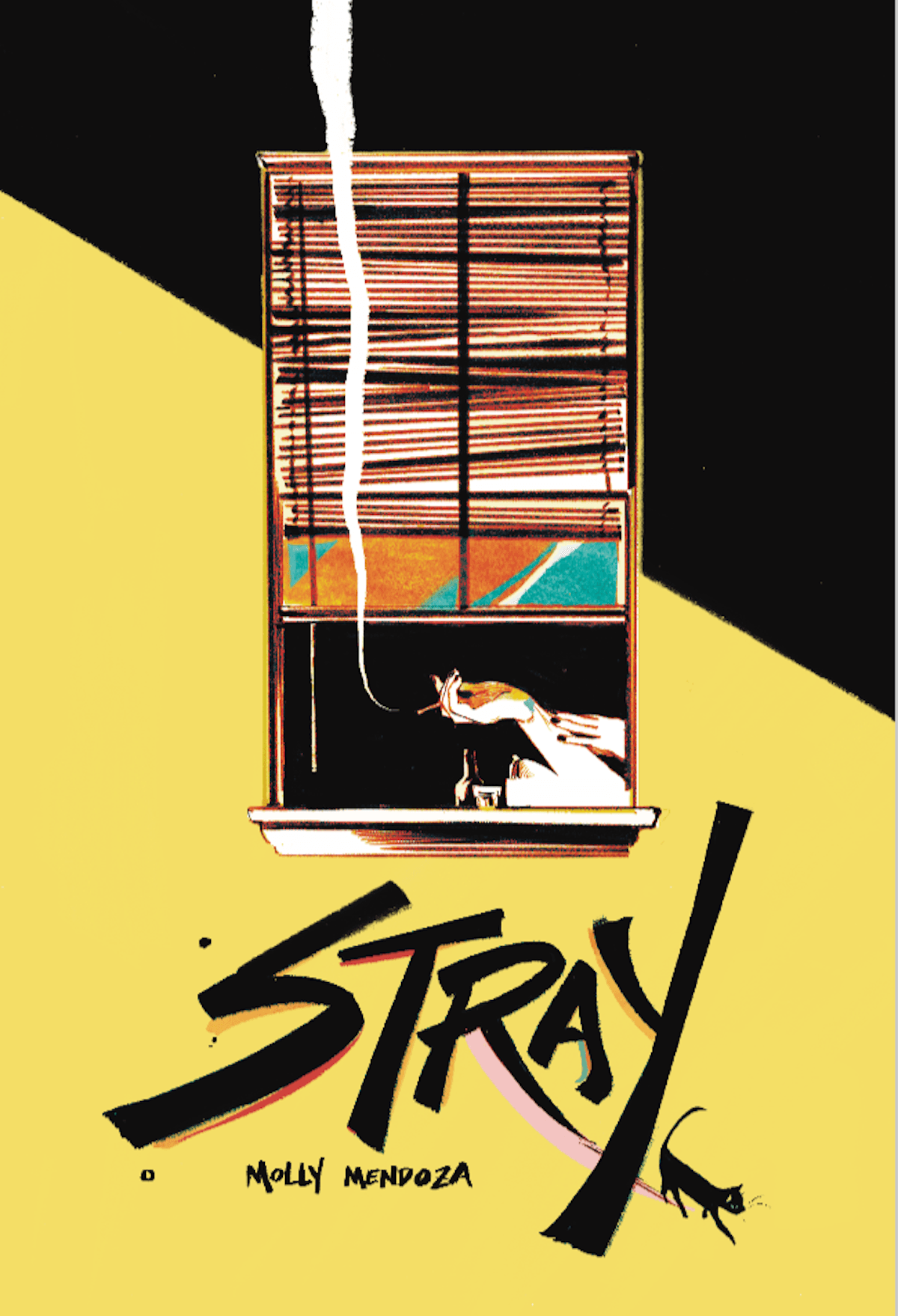
Comic creators give themselves to their book every day, but some comic artists have a specific gift for pouring themselves — bones and all — into the very heart of their comic, giving it a beat that lives out on the page, whether it’s through words, narrative, or art. Then, of course, there are comic creators like Molly Mendoza, whose textured art and visceral emotional storytelling prove the value in laying out the complexities of being a human within a variety of relationships; even those with ourselves. Following on the success of their graphic novel Skip, Mendoza’s latest creation, Stray — now for sale through Bulgilhan Press — follows a new line of emotional rawness about being loved within the confines of our flaws and ushers in a whole new tier of intensity from the Portland-based illustrator.
Popverse was lucky enough to exchange emails with Mendoza about what goes into creating a story as heavy as Stray, and the value of making niche experiences a connecting point for a larger audience.
Stray is something that feels at once very universal and very intimate — how did you even begin to form this story? How long was Stray a concept in your head before it was something on the page?
Stray came from some of my own past experiences as well as the experiences of the people around me. Like Jack, I think a lot of us have had a drunken cry in public or been the one still hung up after a relationship goes south. Those experiences can be embarrassing, an emotion we all feel, and it can also be cathartic to share in those stories together. With Stray I wanted to touch on the idea of toxic nostalgia, a concept I sat down and talked about with Zach Clemente of Bulgilhan Press in 2019.
For me, toxic nostalgia is looking back on a time that was bad with rose colored glasses and chasing after the feeling that time gave you. You might chase it through the idea of a person you once loved, through the music that surrounded you at awful parties, through a drink too many because you can handle it, right? It all sounds very specific, but I believe many of us have an experience that touches on that embarrassing longing, or being the friend of someone who is going through a self destructive time, and Stray was the place for me to write about it; it just took years to get it out of my system and onto the page.
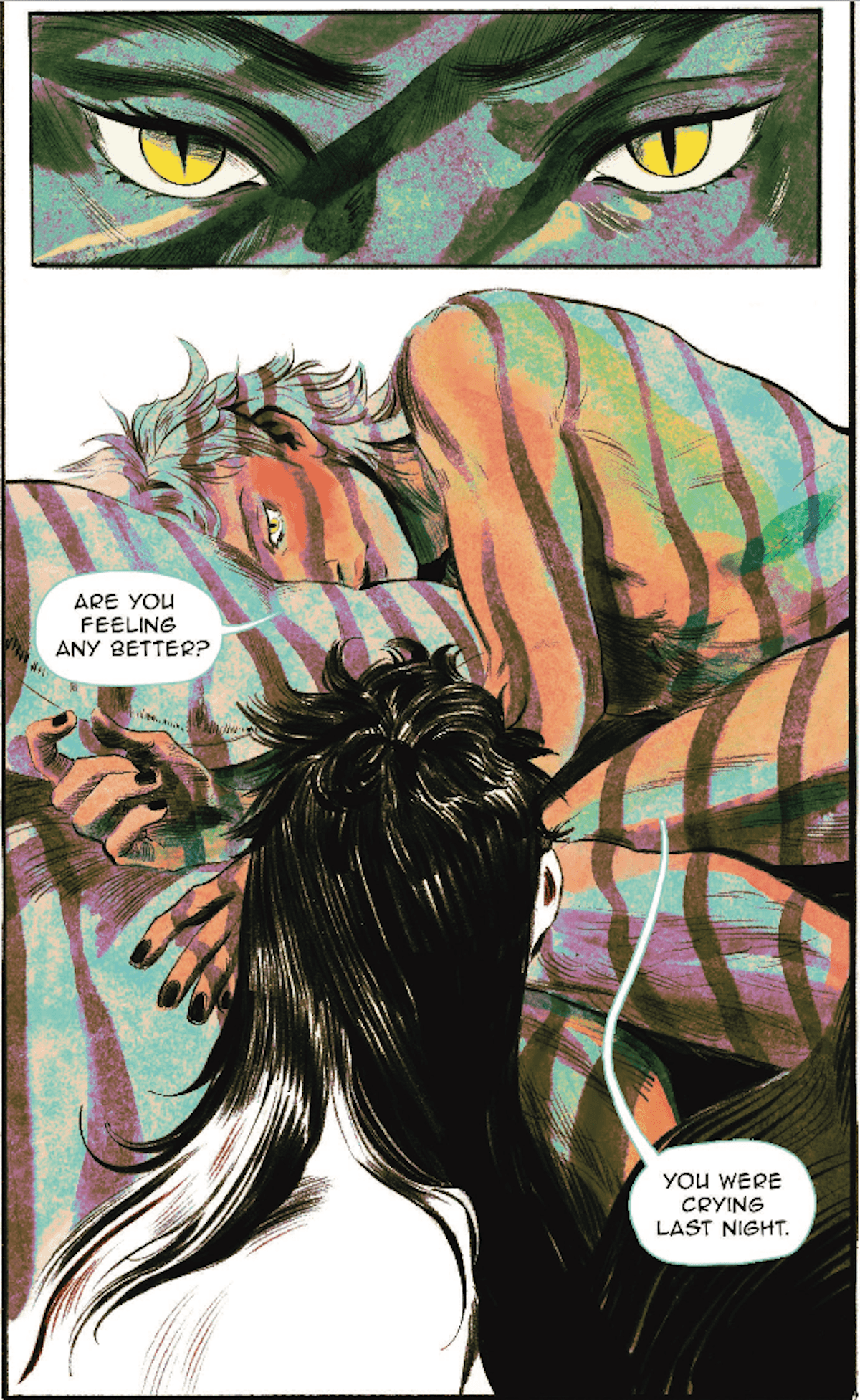
With Skip I was definitely still figuring out how I wanted to write and illustrate comics, definitely was learning. I’d jumped from making 20-30 page minis with minimal dialogue to a 160+ GN, and I had a lot of growing pains in that process. With Stray, I needed to slow down and return to a smaller page count but take what I learned from Skip and apply it to its foundation. Taking things slow and sitting with a shorter work for longer felt much better on the storytelling side of things. I had more time to better consider the layers of visual storytelling I wanted to implement, and I think it made for a more accessible story.
There’s an overarching theme about growth in your work — particularly the kind of growth that is both transformational and vulnerable. As you take this theme with you into new shapes for different books, do you feel like you grow in new ways as a storyteller and illustrator? How does that affect you personally each time you bring it into a story?
I do feel myself grow! Each time I sit down to work on a new story I try and also look for something about its execution that I’d like to attempt or an aspect I struggled with and want to better convey. I go with my gut while writing and often that can take me to those vulnerable places. 'Will this make sense?' 'Am I ready to share this part of myself?' It’s a worry that I go through that can slow down the process, but I have to sit with it and face it too. Ultimately it’s okay to feel a little uncertain and look back on past stories to remember that those uneasy feelings of growth were there too. It’s part of the process!
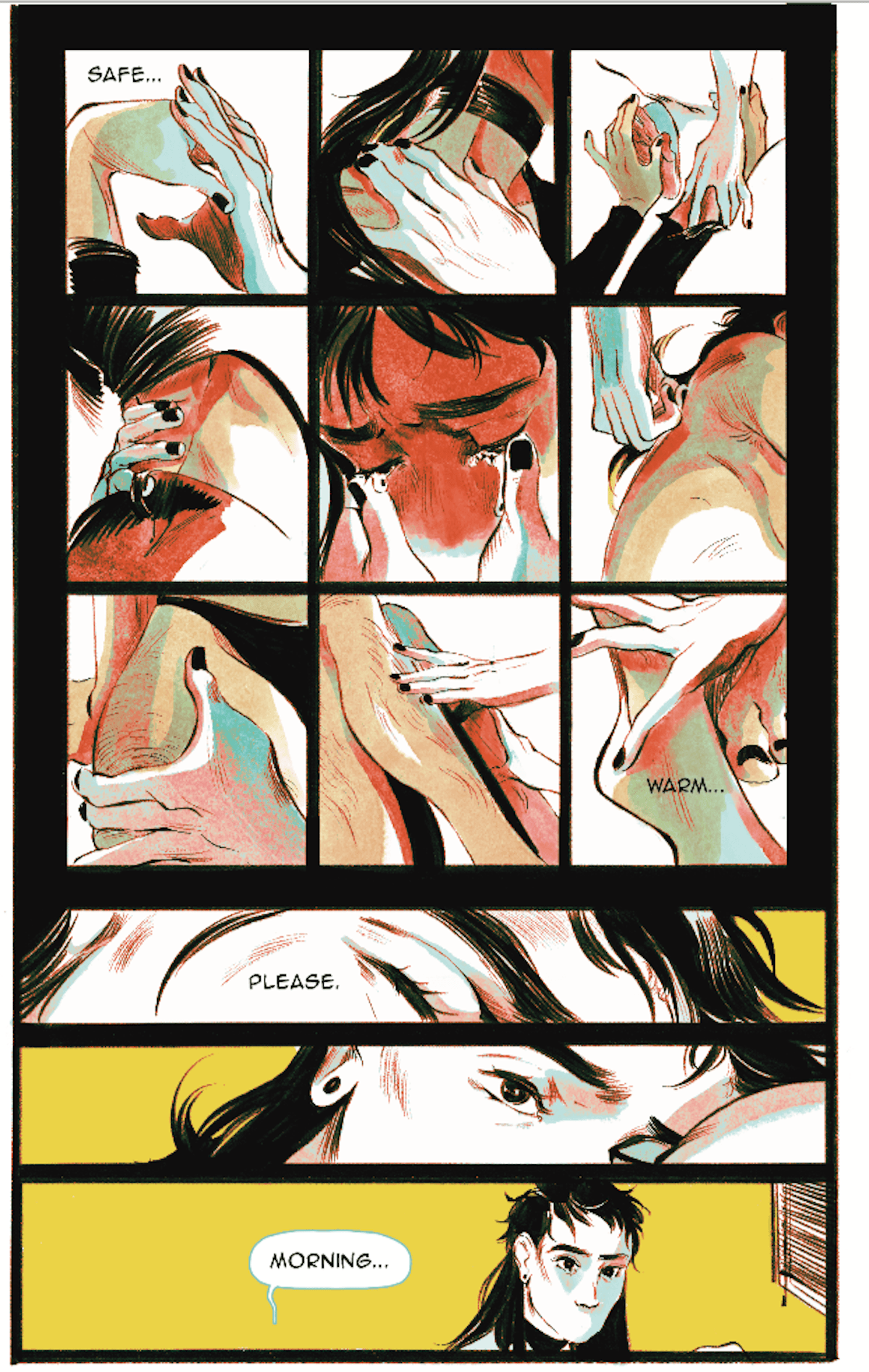
It’s a fun one! Palette is one of my favorite aspects of visual storytelling, and I relish in each choice I get to make. I wanted the comic itself to carry a yellow pallete; a color for harsh sunlight through blinds, unease, and cheap beer. Black showed up often in Jack’s character design as well; grown out hair, their clothing, choker collar, and the slats of the blinds in their home. My intention was for this color to represent the places where Jack is shut off or guarded from their friends and loved ones; the things they don’t want to face are between the lines and that is carried through Stray by using very distinct spot blacks in the comic.
From there I knew I would have three other characters, and so I chose color palettes to best represent them. For example, Amelia is pink because of the fluffy nostalgia of Jack’s scenes with her and the idea of her being seen through rose colored glasses. I create a skeleton for the color story by making these rules for myself about what each color will represent. Having this framework gives me some structure but also a system that I can break when the time is right for a great impact.
Something that caught my eye about Stray was your choice of lettering and narration. It took me a moment, but there’s a color assigned to the narrator, and with it comes a very different tone and a consideration for all involved in the story of Jack’s unraveling. Can you tell me a bit about your choice to have the dialogue — both as an inner-monologue and as interacting across time with other characters — structured this way?
This was an issue that Zach and I addressed near the end of Stray’s development. The story is not only compressed across time but also physically by sitting at a shorter page length. With limited pages we had to devise a way to tell these different characters' perspectives on Jack as clearly as possible, so the back half of the book, where Jack meets Stray, hits the way it needs to. Playing with text bubbles isn’t my strong suit, but they needed to be characterful and even, at times, hold space on their own to make the effect work-- the reader taking in multiple perspectives on one person’s actions over the years.
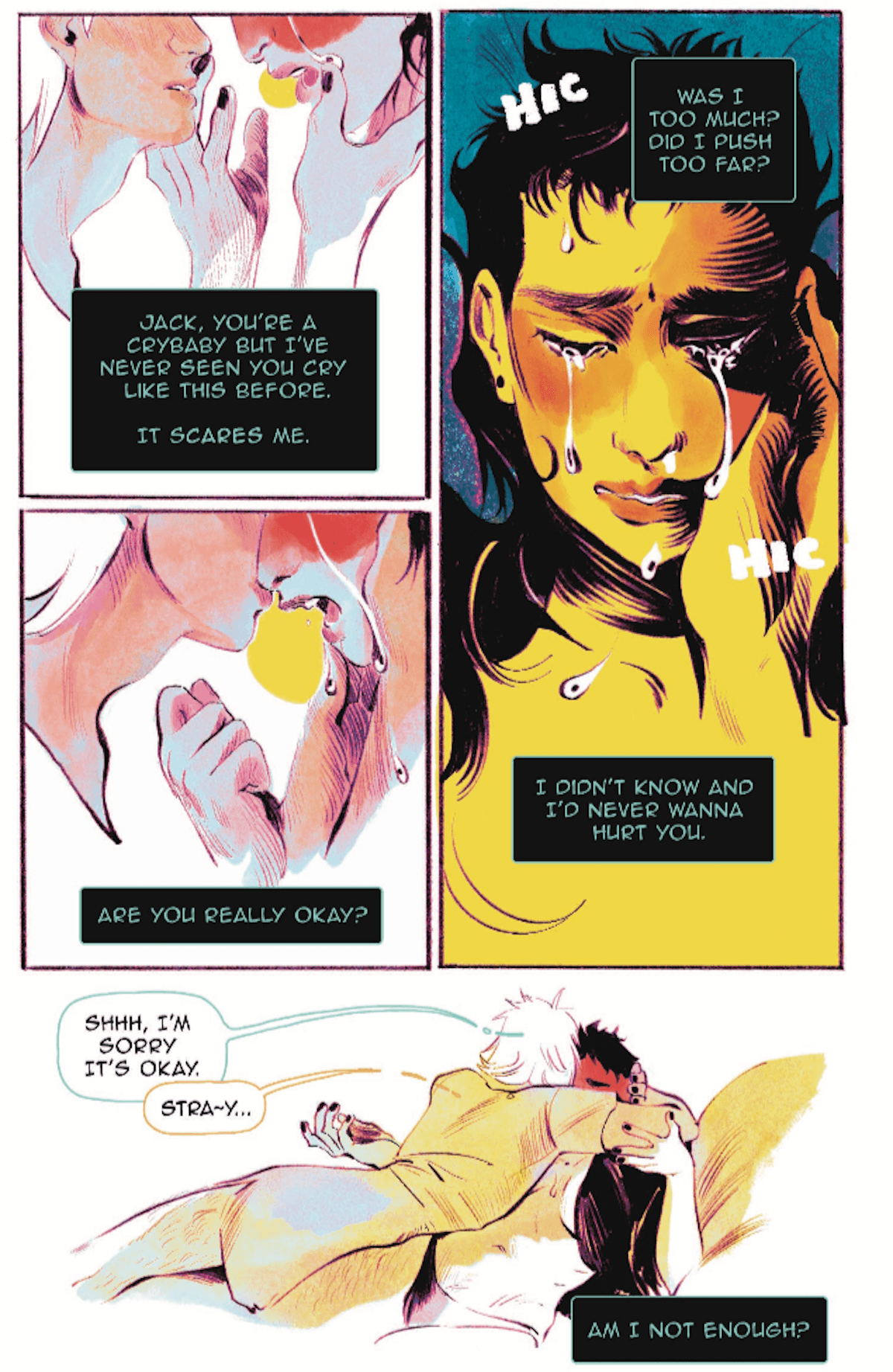
What do you hope that audiences will get out of reading a story like Stray? What is the one thing you, personally, would like people to take away from it?
My comics totally ask to be read a couple of times, and with that ask I’m also open to different interpretations of the work. But if there is one thing I hope the audience gets from Stray it’s this: 'Hey, you fucked up, but someone still loves you, baby.'
What’s the next thing we can expect to see from you in the future?
I have high hopes to get started on a graphic novel I’ve been stewing on since my comic, The Drake’s Sword, debuted at ShortBox Comics Fair in 2021. It’s a comic about a member of the king’s court who is in love with the dragon that the king is sending adventurers to slay. I’d love to let folks in on its development process through Patreon and see what I can come up with for this fantasy setting. I’d also love to make a JoJo’s Bizarre Adventure: Vento Aureo fan comic! Drama, weird stand fights, fashion, romance, weird Araki inspired colors! That sounds so fun to me.
Stray is available to purchase now. Learn more about Molly Mendoza at their website.
Looking for another amazing interview? Why not check out this chat with comics legend Denis Kitchen from NYCC 2022!
Follow Popverse for upcoming event coverage and news
Find out how we conduct our review by reading our review policy
Let Popverse be your tour guide through the wilderness of pop culture
Sign in and let us help you find your new favorite thing.

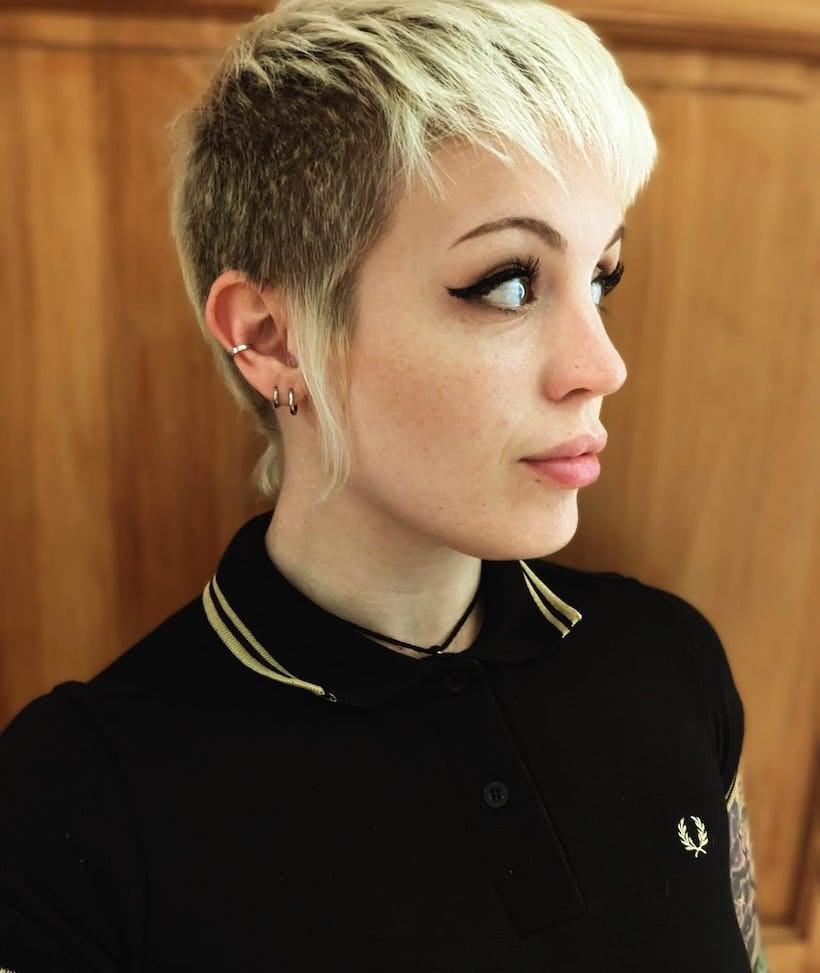
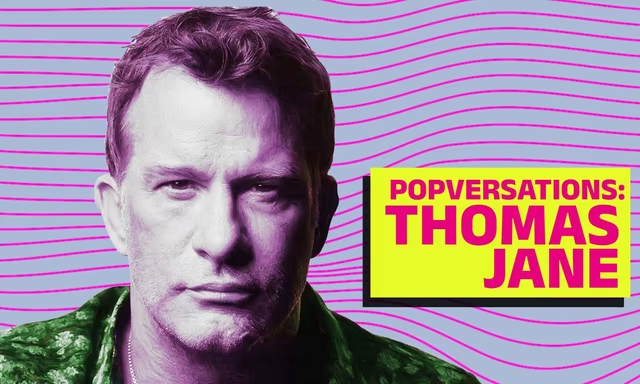


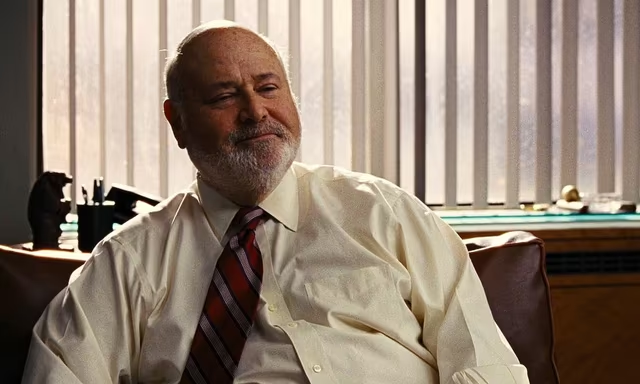
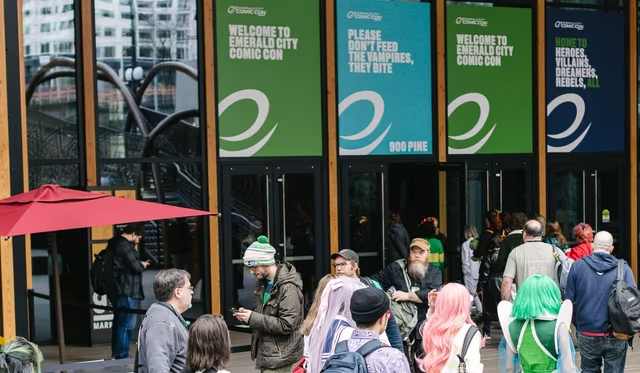

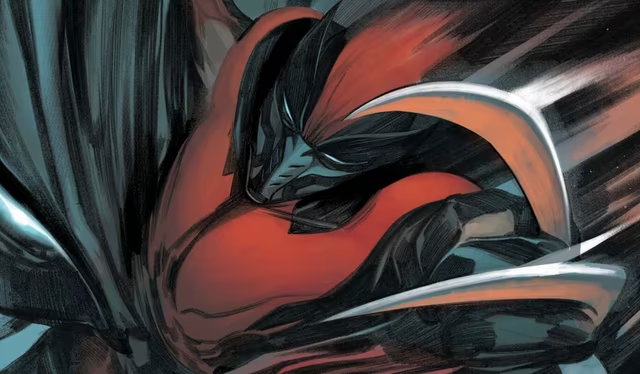
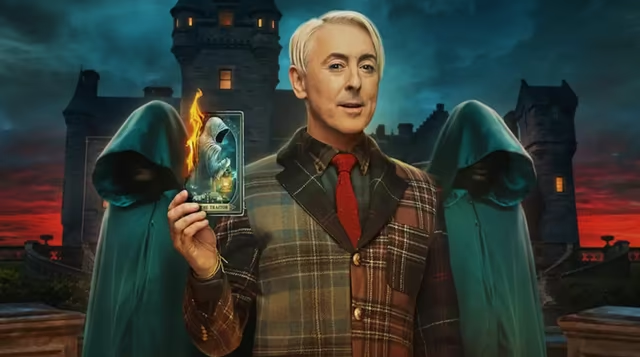






Comments
Want to join the discussion? Please activate your account first.
Visit Reedpop ID if you need to resend the confirmation email.